
The Beatles, also referred to colloquially as the White Album, is the ninth studio album and only double album by the English rock band the Beatles, released on 22 November 1968. Featuring a plain white sleeve, the cover contains no graphics or text other than the band's name embossed. This was intended as a direct contrast to the vivid cover artwork of the band's previous LP, Sgt. Pepper's Lonely Hearts Club Band (1967). The Beatles is recognised for its fragmentary style and diverse range of genres, including folk, country rock, British blues, ska, music hall, proto-metal and the avant-garde. It has since been viewed by some critics as a postmodern work, as well as one of the greatest albums of all time. The album was the band's first LP release on their then-recently founded Apple Records after previous albums were released on Parlophone in the United Kingdom and Capitol Records in the United States.

Friar Park is a Victorian neo-Gothic mansion in Henley-on-Thames, England, construction began in 1889 and was completed in 1895. It was built for lawyer Sir Frank Crisp, and purchased in January 1970 by English rock musician and former Beatle George Harrison. The site covers about 30 acres, and features caves, grottoes, underground passages, a multitude of garden gnomes, and an Alpine rock garden with a scale model of the Matterhorn.
Esher is a town in the borough of Elmbridge in Surrey, England, to the east of the River Mole.

12 Arnold Grove is the birthplace and early childhood home of former Beatle George Harrison. Located in Wavertree, Liverpool, near Picton Clock Tower, it is a small terraced house in a cul-de-sac, with a small alley to the rear. Harrison's parents, Harold and Louise, moved to the house in 1931 following their marriage. The rent was ten shillings a week. Here their four children were born: Louise, Harry, Peter and George.

Electronic Sound is the second studio album by the English rock musician George Harrison. Released in May 1969, it was the last of two LPs issued on the Beatles' short-lived Zapple record label, a subsidiary of Apple Records that specialised in the avant-garde. The album is an experimental work comprising two lengthy pieces performed on a Moog 3-series synthesizer. It was one of the first electronic music albums by a rock musician, made at a time when the Moog was usually played by dedicated exponents of the technology. Harrison subsequently introduced the Moog to the Beatles' sound, and the band featured synthesizer for the first time on their 1969 album Abbey Road.
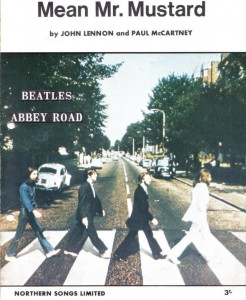
"Mean Mr. Mustard" is a song by English rock band the Beatles, released on their 1969 studio album Abbey Road. Written by John Lennon and credited to Lennon–McCartney, it is the third track of the album's medley. It was recorded with "Sun King" in one continuous piece.

"Honey Pie" is a song by the English rock band the Beatles, from their 1968 double album The Beatles. The song was written entirely by Paul McCartney and credited to the Lennon–McCartney partnership.

"Dear Prudence" is a song by the English rock band the Beatles from their 1968 double album The Beatles. The song was written by John Lennon and credited to the Lennon–McCartney partnership. Written in Rishikesh during the group's trip to India in early 1968, it was inspired by actress Mia Farrow's sister, Prudence Farrow, who became obsessive about meditating while practising with Maharishi Mahesh Yogi. Her designated partners on the meditation course, Lennon and George Harrison, attempted to coax Farrow out of her seclusion, which led to Lennon writing the song.
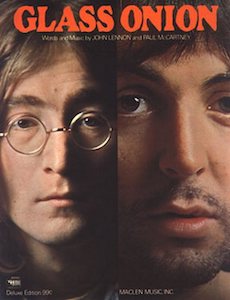
"Glass Onion" is a song by the English rock band the Beatles from their 1968 double album The Beatles. The song was written by John Lennon and credited to Lennon–McCartney.
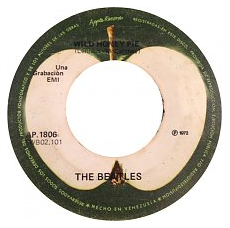
"Wild Honey Pie" is a song by the English rock band the Beatles from their 1968 double album The Beatles. It was written by Paul McCartney and credited to Lennon–McCartney. Less than a minute in length, the song mainly consists of the words "honey pie" being chanted repeatedly and was performed by McCartney without the participation of the other Beatles. The track is often viewed as a filler track and is generally regarded as inconsequential and unmemorable due to its experimental nature.

"I'm So Tired" is a song by the English rock band the Beatles from their 1968 double album The Beatles. It was written and sung by John Lennon, though credited to Lennon–McCartney. Lennon wrote the song during the Beatles' stay in India about insomnia he was having due to constant meditation and because he missed Yoko Ono. The song was recorded in the same session as another White Album song, "The Continuing Story of Bungalow Bill".
"Not Guilty" is a song by English rock musician George Harrison from his 1979 album George Harrison. He wrote the song in 1968 following the Beatles' Transcendental Meditation course in India with Maharishi Mahesh Yogi, an activity that he had led the group into undertaking. The lyrics serve as a response to the recrimination Harrison received from his bandmates John Lennon and Paul McCartney in the aftermath to the group's public falling out with the Maharishi, and as the Beatles launched their multimedia company Apple Corps. The band recorded the song amid the tensions that characterised the sessions for their 1968 double LP The Beatles. The track was completed in August 1968 but not included on the release.
"What's the New Mary Jane" is a song written by John Lennon and performed by the English rock band the Beatles. It was recorded in 1968 during sessions for the double album The Beatles, but did not appear on that album.

Maureen Starkey Tigrett, also known as Mo Starkey, was a hairdresser from Liverpool, England, best known as the first wife of Ringo Starr, the Beatles' drummer. When she was a trainee hairdresser in Liverpool, she met him at the Cavern Club, where the Beatles were playing. Starr proposed marriage at the Ad Lib Club in London on 20 January 1965. They married at the Caxton Hall Register Office, London, in 1965, and divorced in 1975.
Kenwood is a house on the St George's Hill estate, Weybridge, Surrey, England. Originally called the Brown House, it was designed by architect T. A. Allen, and built in 1913 by Love & Sons, a local building firm. The estate was constructed around the Weybridge Golf Club, which was designed in 1912 by Harry Colt.
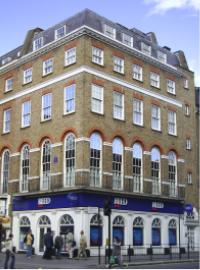
The Apple Boutique was a retail store located in a building on the corner of Baker Street and Paddington Street, Marylebone, London. It opened on 7 December 1967 and closed on 31 July 1968. The shop was one of the first business ventures by the Beatles' fledgling Apple Corps.

34 Montagu Square is the address of a London ground floor and basement flat once leased by Beatles member Ringo Starr during the mid-1960s. Its location is 1.3 miles (2.09 km) from the Abbey Road Studios, where The Beatles recorded. Many well-known people have lived at the address, including a British Member of Parliament, Richard-Hanbury Gurney, and the daughter of the Marquess of Sligo, Lady Emily Charlotte Browne. The square was named after Elizabeth Montagu, who was highly regarded by London society in the late 18th century.

"Ballad of Sir Frankie Crisp (Let It Roll)" is a song by English rock musician George Harrison from his 1970 triple album All Things Must Pass. Harrison wrote the song as a tribute to Frank Crisp, a nineteenth-century lawyer and the original owner of Friar Park – the Victorian Gothic residence in Henley-on-Thames, Oxfordshire, that Harrison purchased in early 1970. Commentators have likened the song to a cinematic journey through the grand house and the grounds of the estate.
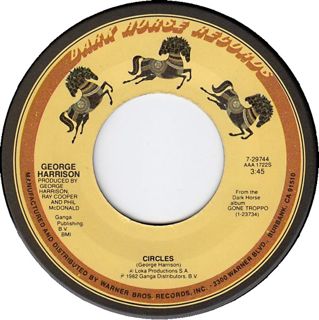
"Circles" is a song by the English rock musician George Harrison, released as the final track of his 1982 album Gone Troppo. Harrison wrote the song in India in 1968 while he and the Beatles were studying Transcendental Meditation with Maharishi Mahesh Yogi. The theme of the lyrics is reincarnation. The composition reflects the cyclical aspect of human existence as, according to Hindu doctrine, the soul continues to pass from one life to the next. Although the Beatles never formally recorded it, "Circles" was among the demos the group made at Harrison's Esher home, Kinfauns, in May 1968, while considering material for their double album The Beatles.
Terence James Doran was an English luxury car dealer, pop music manager and music publishing executive, best known for his association with the Beatles. With Beatles manager Brian Epstein, he co-owned Brydor Cars in the 1960s, supplying sportscars to many figures in the Swinging London era, including the Beatles and members of the Rolling Stones and the Moody Blues. In 1967, he became the manager of Apple Publishing, the first appointment in the Beatles' Apple Corps business organisation. He also managed the Apple artists Grapefruit and Mary Hopkin. He was a personal assistant to John Lennon and then George Harrison. Throughout the 1970s, he worked as Harrison's estate manager at Friar Park in Oxfordshire and assisted in restoring the property.













